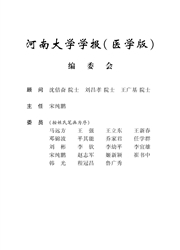

 中文摘要:
中文摘要:
目的观察对痉挛型脑瘫高危儿进行早期干预治疗的效果。方法共选取67例脑瘫高危儿为研究对象,按开始治疗的年龄不同,分为1~3 mon开始治疗的超早期干预组(36例),4~6 mon开始治疗的早期干预组(31例);每组均采用Bobath和Vojta相结合的运动疗法,单唾液酸四己糖神经节苷脂钠针(Momosialotetrahexosylgan-glioside Sodium Injection ,GMI )20mg加入质量分数为5%葡萄糖注射液中静脉注射,共治疗3 mon;采用Gesell评测法,肌张力检查,Vojta姿势反射发育,头部CT等对患儿进行治疗前后评估;3 mon后采用Gesell发育量表测出2组患儿发育商(DQ)和发育年龄(DA ),并进行比较。结果经3 mon治疗后,2组患儿的发育年龄(DA )较实际年龄(CA )均落后,超早期落后程度低于早期组;患儿 DQ值,肌张力,异常姿势改善方面都取得了较好的疗效,同组治疗前后比较,有统计学差异(P <00.1);2组治疗后比较,差异亦具有统计学意义(P <00.1);头部CT亦较前改善。结论早期干预治疗可改善脑瘫高危儿症状,年龄越小,效果越好。
 英文摘要:
英文摘要:
Objective The study tried to analyze the therapeutic effect of early intervention treatment on high-risk spastic type cerebral palsy .Methods Totally 67 infants with high-risk cerebral palsy were divided into the super early intervention group ( 1~3 months old , n=36 cases) and the early intervention group ( 4~6 months old , n=31 cases) ,according to the age for treatment . Each group was treated with the exercise therapy , which is Bobath rehabilitation combined with Vojta rehabilitation . Finally , momosialotetrahexosylganglioside sodium infusion was carried out with 5% glucose . The treatment period lasted for 3 months . Then , the treatment evaluation was performed based on Gesell assessment law , muscle tension inspection , Vojta posture reflection , and image alterations of brain CT before and after treatment .The Gesell developmental scales were used to test the development quotient(DQ) and development age(DA) of two groups after 3 months treatment . Results After 3 months training , the scores of DA is lower than CA of two groups , the super early intervention group has higher scores than the early intervention group . The scores of DQ , muscle tension , Vojta posture reflection and CT images were improved well in two treatment groups . The infants , symptoms were improved well after treatment in either super early intervention group or early intervention group with significant difference (P 〈 0 .05 ) . Comparing between the two groups , the efficacy of super early intervention group was much better than early intervention group after treatment , suggesting early therapy is necessary for the disease .Conclusion Early intervention treatment on high-risk cerebral palsy has significant effects on symptoms , and early therapy is necessary for the high-risk infants .
 同期刊论文项目
同期刊论文项目
 同项目期刊论文
同项目期刊论文
 Piperonal ciprofloxacin hydrazone induces growth arrest and apoptosis of human hepatocarcinoma SMMC-
Piperonal ciprofloxacin hydrazone induces growth arrest and apoptosis of human hepatocarcinoma SMMC- 期刊信息
期刊信息
